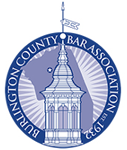Most people do not think about emergency exits in their workplaces that often, although they might notice the signs from time to time. However, these essential safety routes save lives in dangerous situations and must be prioritized in work environments. When they do not exist or are not adequate in any way, employees can suffer serious or even fatal injuries. Workers who are not familiar with their company’s emergency exit routes and evacuation plans can do themselves a favor by learning more about them; waiting until a real emergency happens could be a terrible mistake.
Are There Rules for Emergency Exit Routes?
There are rules for emergency exit routes, but the first part of understanding the importance of emergency exit routes is to realize their purpose. They provide continuous, unobstructed paths to exits from any point in a workplace; they serve as paths leading to safe locations. Emergency exit routes consist of an exit access, the part that leads to the exit, and the actual exit route that is separate and protected from the other areas. The exit discharge leads to the safe area, which is generally outside, onto a walkway, street, or open space.
The Occupational Safety and Health Administration (OSHA) has specific guidelines for these exits. To begin with, the line of sight for exit signs must be clearly visible at all times. The exit doors have to stay unlocked on the inside and be free from alarms or devices that could restrict their use if they fail. The doors should also be free of anything that could lessen their visibility, such as signs or decorations.
Exit routes cannot be obstructed by any dead-end corridors, locked doors, equipment, or materials. Blocked and obstructed doors and routes can easily cause delays that result in panic and confusion for building occupants. The routes also need to have signs in them that direct people where to go if it is not obvious. If there are any passages or doors along the exit route before the actual exit, those need to be marked Not an Exit or with a sign that shows what it is, such as Restroom or Closet.
There also needs to be adequate lighting, and if there are repairs or construction underway in the building, those exit routes still need to stay open. The exit discharges must lead directly into the safe areas, which must be big enough to hold all the building’s occupants should they need to get out. No one wants to be squeezed in together in small spaces for long periods; not only is it uncomfortable, but also it can be dangerous to one’s health.
Are There Other OSHA Safety Protocols?
On average, OSHA requires that companies have at least two emergency routes in their facilities, but this all depends on the size of the building and how many employees work there. Employers are responsible for following federal regulations and basing their exits on those factors. OSHA also requires that companies train their employees on these response plans through emergency preparedness training. This should give workers a detailed overview of the kinds of emergencies that could arise, how to efficiently respond to them, where the exits are located and how to use them, and who to contact when emergencies occur. Although many companies do not conduct emergency exit drills, this is a good idea.
OSHA also recommends that workplaces with at least 10 employees should have formal emergency action plans (EAP) that specify the protocols for responding to emergency situations at work. At the minimum, plans for dealing with fire hazards and emergencies should include the following:
- A list of all the major fire hazards, the correct handling and storage procedures for hazardous materials, possible ignition sources, and the proper fire protection equipment needed to control these hazards
- The names of employees responsible for maintaining equipment in place to control and prevent sources of fires, including sources of ignition and fuel source hazards
- Information about the maintenance and safeguards used on heat-producing equipment
- The procedures for controlling the accumulation of combustible and flammable waste materials
An emergency notification system (ENS) can also be part of an EAP; an ENS is a broadcast communication platform that notifies people of a pending or real-time emergency situation. The United States Federal Communications Commission uses wireless emergency alert ENS systems to inform the public about emergencies such as missing children and dangerous weather like tornadoes or hurricanes. These systems can be one-way or two-way, and the latter is helpful with helping security officers get feedback about rapidly deteriorating conditions or whether employees are safe.
More Important Emergency Exit Guidelines
OSHA also specifies that exit route ceilings be 7 feet, 6 inches high at the minimum, and the access needs to be at least 28 inches wide at all points. The exits also need to be separated by fire-resistant materials having a one-hour fire-resistance rating when the exits connect three or less stories. If the exit connects more than that many floors, it needs a two-hour fire resistance rating. All door openings need to have an approved self-closing fire door that stays closed after being shut in the event of an emergency.
These exits also need to be checked and maintained periodically to ensure their safe passages. If there are any highly flammable furnishings or explosives on their routes, these must be removed. Broken lights or signs should be replaced as needed, and anything in the way cannot be left there. Fire-retardant solutions and paints also need to be examined from time to time to ensure that they are still effective. Designated safety personnel can be responsible for keeping emergency exits well cared for, and they can report their findings to supervisors.
My Company Does Not Have Emergency Exits
If your employer is not providing adequate emergency exits for their workers, they could be in violation of the law. Employees have the right to work in environments that do not present any risk for serious harm. They are also entitled to receive information and training regarding workplace hazards, applicable OHSA standards, and procedures for preventing the hazards. Employees are also allowed to have access to records pertaining to work-related illness and injures.
Besides emergency exits and emergency plans, companies also need to have fire extinguishers, first aid kits, flashlights, protective clothing, and respiratory protection available in case of an emergency. It is also a good idea to have extra water, food, and batteries on site just in case; an emergency evacuation policy should also be published and placed in a highly visible location. Particularly with larger employers, there should be regular emergency safety training and drills. Should an emergency occur, there needs to be a way to account for all personnel, a designated emergency officer, and a post-incident report.
When an employee suspects that there is a serious workplace hazard not being addressed and/or that the company is not adhering to OSHA rules, that employee has the right to file a complaint with OSHA. In these complaints, employees can request inspections to check for hazards; OSHA keeps complainant identities confidential. It is also illegal for employers to retaliate against employees who file complaints about workplace health and safety concerns. Retaliation could include demotion, firing, workplace harassment, or being passed over for a promotion. Workers who believe that their employers have retaliated against them have 30 days to file complaints with OSHA. To learn about filing a complaint, call OSHA at 1-800-321-6742; TTY 1-877-889-5627.
Cherry Hill Workers’ Compensation Lawyers at Pietras Saracino Smith & Meeks, LLP, Help Workers Injured on the Job
Keeping workers safe needs to be a priority for every employer. If you have concerns about workplace safety or have been injured or fallen ill because of a work-related incident, the experienced Cherry Hill workers’ compensation lawyers at Pietras Saracino Smith & Meeks, LLP, are ready to help. We will be your advocate and will fight to secure the compensation for which you are entitled. Call us today at 856-761-3773 or contact us online to schedule a free consultation. Located in Cherry Hill, New Jersey, we serve clients in Camden, Cinnaminson, Delran, Maple Shade, Pennsauken, and throughout South Jersey.













